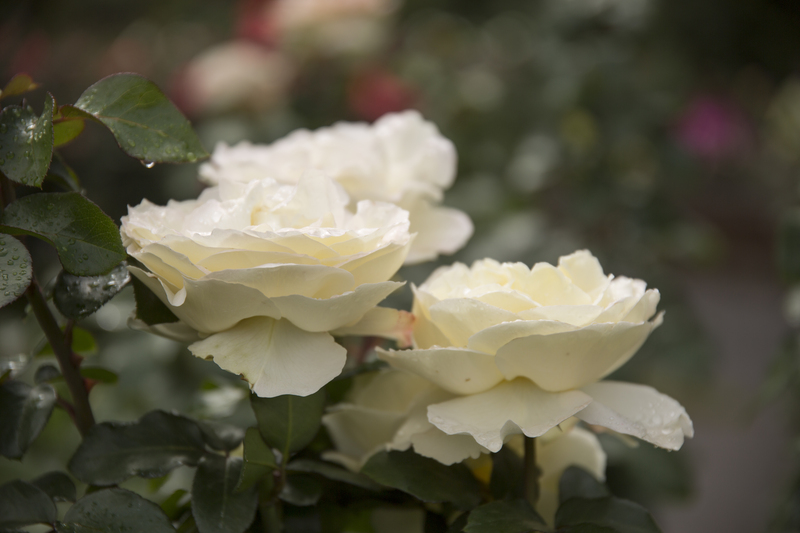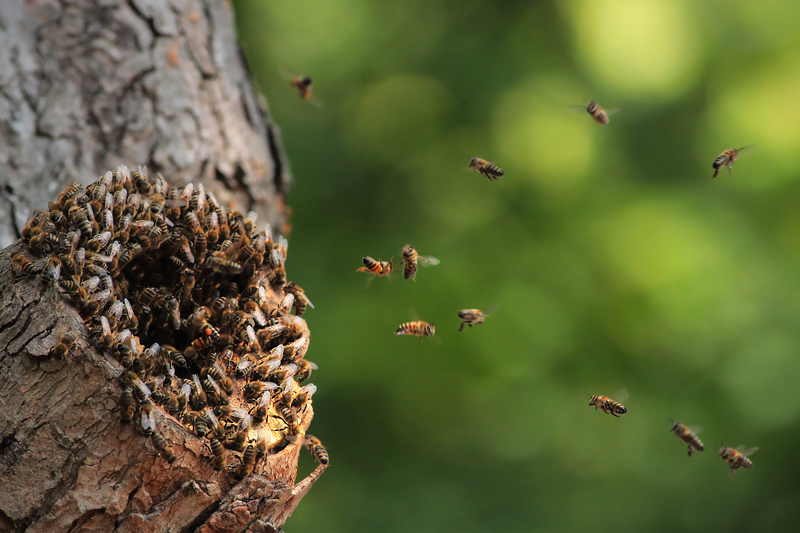Evergreen Climbers for Shade: A Green Dream in Every Shady Space
Posted on 17/09/2025
Evergreen Climbers for Shade: A Green Dream in Every Shady Space
Evergreen climbers for shade are every gardener's secret weapon. These versatile, lush plants can transform dark and underutilized corners of your garden, patio, or balcony into enchanting green retreats. Whether you're dealing with unsightly fences, blank walls, or simply want to add year-round interest to your shady spaces, evergreen climbers are the answer. In this comprehensive article, we'll explore the best species, care tips, creative uses, and ultimate benefits of introducing these stunning plants into your shady garden areas.
Why Choose Evergreen Climbers for Shade?
Every garden has those tricky spots - perhaps under a mature tree, along a north-facing wall, or in the shadow of a building. While some plants might struggle, shade-tolerant evergreen climbers thrive and even excel in these environments.
- They provide year-round greenery, offering texture and color when many other plants are dormant.
- Ideal for covering unattractive structures, fences, or sheds, quickly turning them into features.
- Sustain wildlife by providing shelter for birds and insects, even in the colder months.
- Offer privacy, insulation, and visual interest in urban or suburban gardens.
Let's delve into the best evergreen climbers for shade and how you can make the most of these green marvels.

Top Evergreen Climbers for Shady Spaces
Not all climbers are created equal, and not all are suitable for shady environments. If you're seeking evergreen climbing plants for shade, these varieties are proven performers:
1. Hedera helix (English Ivy)
Perhaps the most popular evergreen climber for shade, English ivy is famed for its resilience and adaptability.
- Thrives in deep shade, making it perfect for north-facing walls and fences.
- Its classic green foliage can easily cover large areas, creating a tapestry-like effect.
- Easy to control with regular pruning.
- Cultivars such as 'Goldchild' or 'Glacier' add variegation and extra interest.
2. Trachelospermum jasminoides (Star Jasmine)
This elegant climber offers year-round glossy leaves and fragrant white flowers in summer.
- Tolerates partial to full shade, particularly in mild climates.
- Dense, evergreen coverage is ideal for privacy screening.
- Though slower growing, it's easy to train on trellises and wires.
3. Lonicera japonica (Evergreen Japanese Honeysuckle)
Known for its delightful fragrance and robust performance, this climber can cover spaces quickly.
- Will thrive in anything from part-shade to dappled sunlight.
- Its semi-evergreen nature is reliable in mild winters.
- Attracts pollinators with its sweet scented blooms in summer through autumn.
4. Euonymus fortunei 'Silver Queen' or 'Emerald Gaiety'
Not strictly a climber, but when trained, can scramble up supports, offering evergreen, variegated foliage.
- Excellent in both full and partial shade.
- Copes well with dry and poor soils.
5. Vinca major (Greater Periwinkle)
An excellent ground cover that can be trained up support structures, greater periwinkle features bold, evergreen leaves and delicate lavender-blue flowers in spring and summer.
- Ideal for shady inclines, banks, or walls.
- Needs minimal maintenance once established.
6. Clematis armandii
Among the few evergreen clematis, Clematis armandii is prized for its shiny foliage and springtime star-shaped flowers.
- Performs best in partial or light shade and requires moist, well-drained soil.
- A climbing beauty with a luscious scent.
7. Passiflora caerulea (Blue Passion Flower)
While not fully evergreen in very cold winters, in mild regions, the blue passion flower will retain lush green leaves throughout the year.
- Semi-shade tolerant, offering unusual and exotic passion flowers in late summer.
- An instant conversation piece for shady patios and gardens.
How to Grow and Care for Evergreen Climbers in Shade
While evergreen shade climbers are tough, a little attention will help them flourish and keep your shady oasis looking vibrant all year long.
Planting Tips
- When possible, improve the soil by digging in plenty of organic matter, such as compost or leaf mould. Shady spots often have dry and poor soil quality.
- Watering: Shade doesn't always mean moisture. Keep young plants well-watered in their first season.
- Space climbers appropriately to allow free air movement and prevent fungal diseases.
Training and Supporting Your Climbers
- Use trellises, wires, or netting for climbers that twine, such as clematis and honeysuckle.
- Self-clinging varieties like ivy can attach directly to brick or stone, but check local guidelines and regularly inspect to prevent damage.
- Tie new shoots loosely but securely with soft ties, especially in windy sites or to direct growth.
Pruning and Maintenance
- Annual pruning keeps climbers tidy, encourages new growth, and prevents them from overwhelming your space.
- Prune after flowering for most varieties, and remove any dead or diseased branches as needed.
- Mulch around the base each spring to retain moisture and enrich the soil.
Feeding
- Apply a balanced, slow-release fertilizer in spring for optimal growth and flowering (use organic options whenever possible).
- In poor soils or containers, additional liquid feeding every few weeks during the growing season can boost performance.
Creative Ways to Use Evergreen Climbers in Shady Spaces
Evergreen climbers are one of the most adaptable garden design tools. Consider these inspiring ideas to make your shady space a green dream:
- Cover unsightly walls or fences with a vertical layer of living green that evolves with the seasons.
- Soften the edges of sheds and outbuildings using fragrant honeysuckle or jasmine.
- Create secret leafy alcoves with arches and pergolas swathed in evergreen climbers.
- Disguise rubbish bins, oil tanks, or compost areas with cleverly positioned coverage.
- Support wildlife by planting near bird tables, bug hotels, or water features.
- Green up shady courtyards or balconies by growing climbers in pots and guiding them up trellis or obelisks.
- Use contrasting evergreen foliage and variegations to break up monotony and add visual intrigue.
Benefits of Evergreen Climbers in Shade Gardens
The value of evergreen climbing plants for shade extends far beyond aesthetics. Here are some of the lasting advantages:
- All-season color: Lush green coverage even during winter when most other plants are bare.
- Privacy and screening: Rapidly create secluded, tranquil spaces to enjoy year-round.
- Wildlife support: Shelter and food for beneficial insects and birds, improving biodiversity.
- Air quality improvement: Leafy climbers naturally filter dust and absorb pollutants.
- Energy efficiency: Green walls and fences can insulate your home, moderating temperatures.
- Soil stability: Root systems help prevent erosion on slopes or loose ground.
Choosing the Best Evergreen Climber for Your Shady Space
Not sure which climber to try first? Here's a quick-reference guide:
| Climber | Shade Tolerance | Flowering | Key Features |
|---|---|---|---|
| English Ivy | Full shade | No | Fast growth, classic look, bird habitat |
| Star Jasmine | Partial/Full shade | Yes, fragrant | Glossy foliage, perfume, vertical greening |
| Japanese Honeysuckle | Partial shade | Yes, scented | Quick coverage, attracts pollinators |
| Clematis armandii | Light/Partial shade | Yes | Early blooms, shiny leaves |
| Periwinkle | Full shade | Yes | Ground cover, low maintenance |
Common Challenges with Evergreen Climbers for Shade (and How to Overcome Them)
- Poor soil: Add well-rotted manure, compost, and mulch regularly.
- Dry shade: Choose drought-tolerant species like ivy and periwinkle, and water well during establishment.
- Pest and disease: Monitor for aphids, fungal diseases, and slugs; prune regularly to ensure air movement.
- Overgrowth: Stay on top of annual pruning to prevent woody or unruly growth.
- Damage to structures: Monitor self-clinging species to ensure roots don't penetrate brickwork or mortar.

Frequently Asked Questions About Evergreen Climbers for Shade
1. Do evergreen climbers grow in deep shade?
Many, like Hedera helix and Vinca major, are well-adapted to deep shade. For flowering climbers, brighter shade or dappled light may encourage better blooms.
2. Are evergreen shade climbers invasive?
Some, such as English ivy, can spread rapidly and may require regular maintenance. Always check local guidelines before planting.
3. Can I grow evergreen climbing plants for shade in containers?
Yes! Most evergreen climbers cope well with container life provided they have a sturdy support and consistent moisture. Regular feeding will keep them looking healthy and lush.
4. What is the fastest-growing evergreen climber for shade?
If speed is your goal, English ivy and honeysuckle are among the fastest to cover walls or fences in shade. Prune as needed to manage growth.
Your Next Steps: Evergreen Shade Gardens Await
Evergreen climbing plants for shade bring more than just greenery; they provide a sanctuary of life, color, and texture in the most challenging corners of your garden or balcony. From the classic lines of ivy to the fragrant clouds of jasmine and the sparkling variegations of euonymus, there's a shade-loving evergreen climber for every purpose and personality.
Start with one or two species, provide a bit of extra care during establishment, and soon you'll enjoy the rewards of a truly evergreen, ever-beautiful shady space - a true green dream!
- Get inspired by local botanic gardens or online photo galleries.
- Visit your local nursery for tailored advice on what thrives in your specific region.
- Experiment and combine varieties for layered, year-round impact.
Transform your shady spaces today with gorgeous, easy-care evergreen climbers - and watch your green dream flourish in every shadowy corner!

